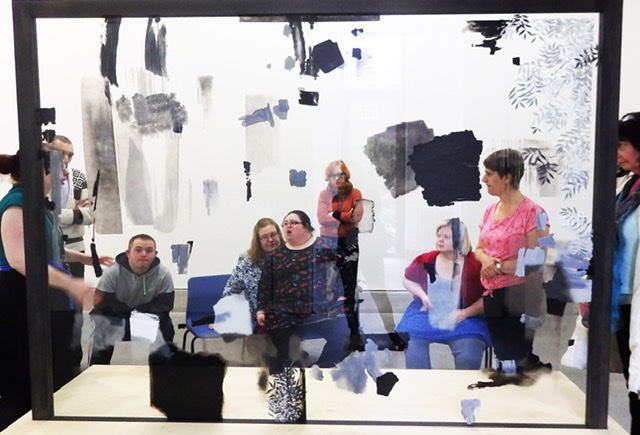We recently spoke to British museum professional and academic Jade French (twitter: @jadefrench and instagram: @french.jade) about her new book Inclusive Curating in Contemporary Art. We asked her to reflect on how her book contributes to the demystification of curation and what she learned from the artist-curators she worked with to create the 2017 exhibit Auto Agents in Liverpool, UK. Inclusive Curating in Contemporary Art is available to order internationally (link here). The book’s introduction can also be downloaded free of charge (link here). And for a limited time you can also use a 50% discount code: ARCFRENCH50 (valid until the end of December 2020). Wishing you happy reading!
***
Back in 2017, I supported five artists with intellectual disabilities to curate a contemporary art exhibition at Bluecoat, Liverpool’s centre for contemporary art in the UK. The exhibition titled Auto Agents sought to understand how curating might be reimagined as an accessible practice with intellectually disabled people, to question what we think of as curating, and crucially, who we think of as potential curators. As the project’s initiator and facilitator, I had the significant task of devising ways to make curating inclusive and accessible; to break it down into its constituent parts for these curators to review, critique and ultimately, reengineer. Curating, after all, is an ever-changing terrain occupying a broad scope of activities, practices and professions. Yet, at the same time, it remains largely an exclusive practice for a privileged few synonymous with ideas of authority, gatekeeping and expertise.

This image shows a meeting of the five curator’s for the art exhibition, Auto Agents. The photo is framed by a pane of glass abstractly painted with grey, white and black brushstrokes—this is an artwork by Niamh O’Malley. Photo Courtesy Jade French.
In many ways, this project – and its subsequent book – is the culmination of my professional experience to date; the collision of art and advocacy. Significantly, before I began my career in museums, twelve years ago I worked in disability social care services as a carer and support worker for intellectually disabled people. While at the time my interests in art museums and disability support work seemed worlds apart, as my new book demonstrates, approaches found in disability advocacy and support can prove incredibly useful beyond the field of social care and can be applied to other sectors like museums. Social care approaches like person-centred planning advocate that people’s care should no longer be decided on solely by professionals, but instead, determined by the individuals themselves who should be empowered to assess their own needs and shape their own support. To me, this remains a powerful message and one that I have sought to apply to museum practice.

Photo of the author, smiling, in the foreground. Behind her are plants, desk and bulletin board. Courtesy Jade French.
Emerging from my experience as a support worker, this book presents “inclusive curating,” a facilitated five-step process enabling a wide demographic of people to become curators. Grounded in a case study which details an exhibition developed by learning disabled curators, this book offers guidance in putting inclusive curating into action alongside a range of practical resources and key debates. Curating is often considered an exclusive job for a privileged few. But, by breaking it down using as demonstrated throughout this book, not only does curating become more usable for more people, it also contributes to understanding the ways in which our cultural spaces can become democratized.
This book will be of interest to museum professionals, museology academics and students, artist and community organizers interested in ways to curate exhibitions in inclusive and accessible ways. I hope this book presents not only a practical curatorial process but contributes to broadening the ways in which curating – and crucially the curator – is defined.
